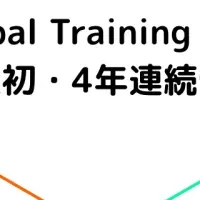
SEOULTECH Proposes Innovative Designs for Enhanced Vibration Energy Harvesting Technology
Powering the Future: SEOULTECH's Breakthrough in Vibration Energy Harvesting
In a significant development for energy harvesting technology, researchers at the Seoul National University of Science and Technology (SEOULTECH), led by Associate Professor Dahoon Ann, have proposed novel designs that aim to enhance the efficiency and power output of vibration energy harvesters (VEHs). This advancement has the potential to reshape the landscape of energy conversion methods traditionally reliant on electromagnetic induction (EI).
Electromagnetic induction is a well-established principle that produces voltage across a conductor by either varying the magnetic field or moving the conductor through a fixed magnetic field. This principle has been used extensively in larger-scale applications but has seen limited innovation in smaller mechanisms, such as those harnessing ambient vibrations for energy.
The Challenge of Low Power Output
The primary drawback of many existing energy harvesters is their comparatively low power output relative to their size. Most approaches to enhancing power output have focused on using larger, more potent magnets and increasing the number of coil turns, but this can lead to bulky designs that limit practical implementation. Instead of following this traditional path, the researchers at SEOULTECH explored innovative strategies aimed at optimizing the topological arrangement of magnets and coils to maximize changes in magnetic flux. Their study, published in the Journal of Science Advanced Materials and Devices, shared these insights based on comprehensive simulations on cylindrical EI coils and magnet cores.
Breaking Ground with New Designs
The researchers introduced a repulsive ring magnet pair-and-yoke-based design aimed at enhancing the conversion of mechanical energy into electrical energy. Through their experiments, they demonstrated that using both a repulsive magnet configuration and optimizing the coil’s position and thickness significantly improves performance. Notably, the incorporation of a yoke—designed to guide and concentrate the magnetic flux—yielded an impressive increase in power consumption at the external load by approximately 5.8 times.
Moreover, the study highlights the critical zones in a magnetic circuit where power generation becomes impractical due to a zero magnetic flux gradient. The re-engineering of coil placement evidenced a remarkable 5.3-fold increase in power generation, providing a strategic pathway for enhanced energy output.
Two Novel Hybrid Designs
The study proposes two alternative designs for EI-VEHs. The first features a moving coil winding with fixed disc magnets and a yoke affixed to the housing, promising high power output but with potential structural vulnerabilities. Conversely, the second design utilizes moving ring magnets with a stationary coil winding, enclosed by a yoke. This configuration allows for structural stability while still achieving an output close to 85% of the former design's power output.
Dr. Ahn optimistically reflects that these innovations could pave the way for a future where battery-operated devices rely on these energy harvesters as their primary source, promoting sustainability and efficiency in power usage.
Implications of the Research
This research not only represents a significant stride in engineering design but also has broader implications for renewable energy applications in everyday devices. By minimizing dependence on conventional batteries, these advancements could usher in a new era of technology that aligns with eco-friendly initiatives, significantly reducing electronic waste and energy consumption in the long run.
For further details on this groundbreaking research, refer to the original publication in the Journal of Science Advanced Materials and Devices and visit the SEOULTECH website.
Topics Consumer Technology)










【About Using Articles】
You can freely use the title and article content by linking to the page where the article is posted.
※ Images cannot be used.
【About Links】
Links are free to use.